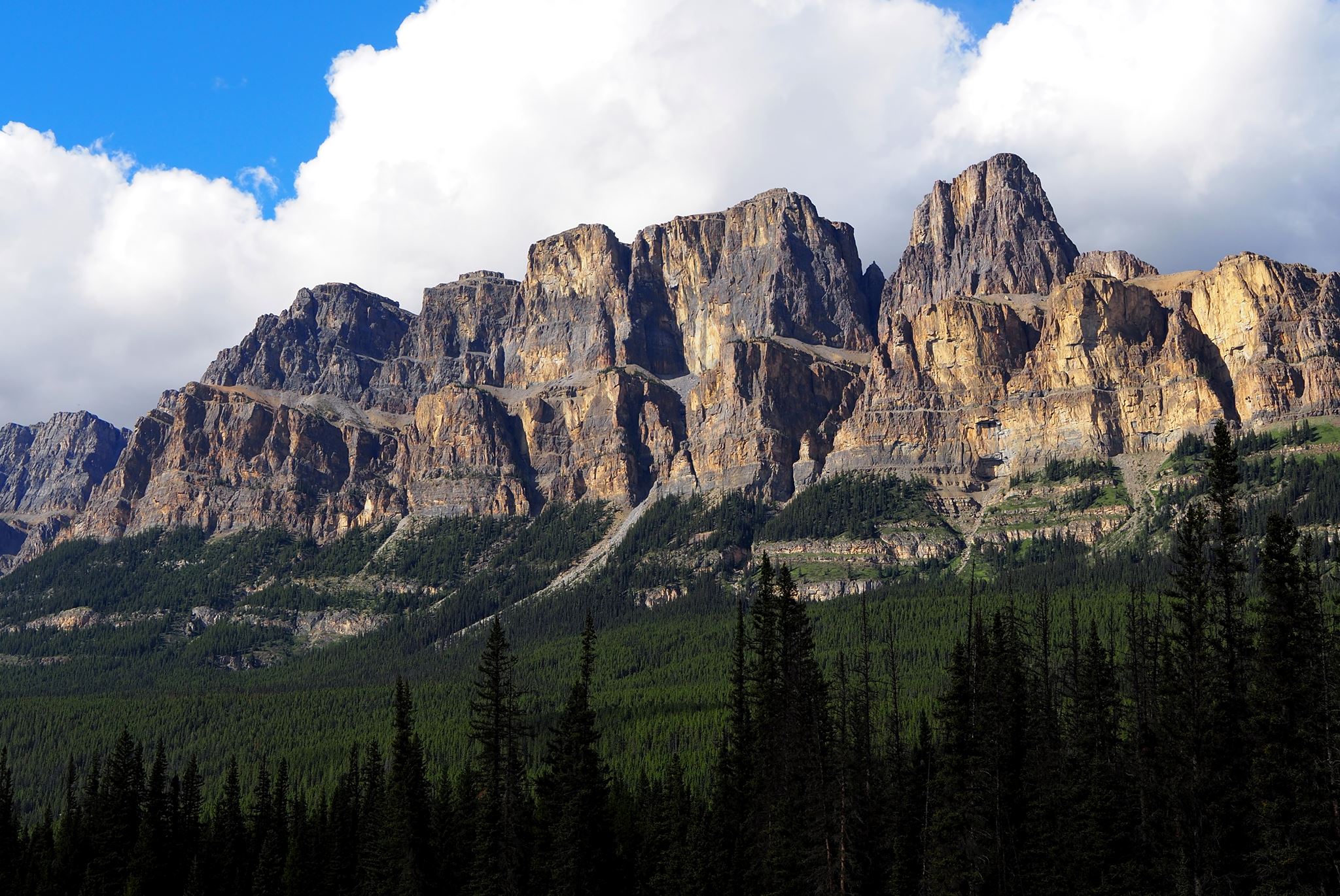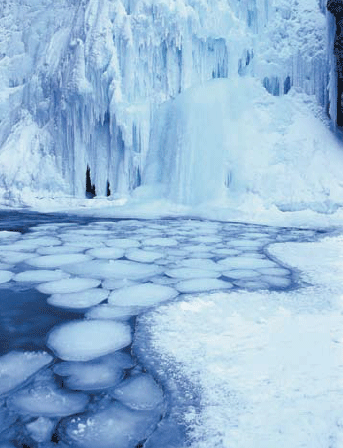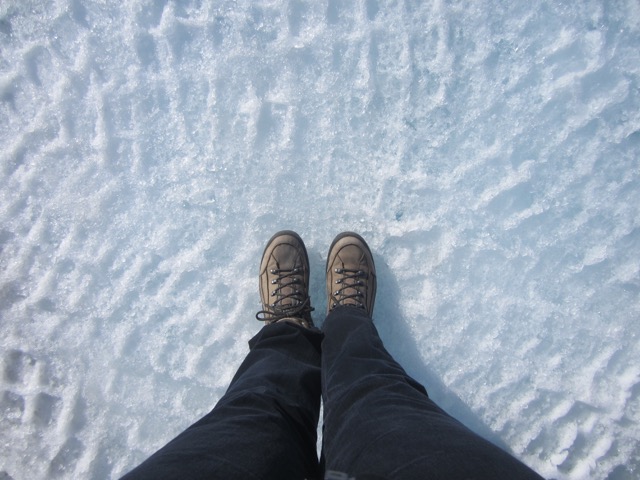They are massive, they dominate the horizon in every direction, and every single one of them looks different from the others.

We’ve been traveling up the Rocky Mountains for months now. They get more and more astounding the further you go. We never get tired of looking at them.

I couldn’t help myself; I started to give them names. Wizard’s Hat Mountain. Mammoth’s Molar Peak. Dragon’s Gouge. Slanted Amazing Swirly Rock.

After seeing them all, I have to say that the Canadian Rockies outshine the American ones by a fair margin. Yet, political boundaries aside, these massive mountains were all born at the same time. It was a birth that took hundreds of millions of years – and that was before the snow came.
It started like all change starts.
It’s the same way that you change: something gets under your skin.
One day, around three hundred million years ago (give or take), the Pacific Plate tucked itself under the North American plate. The inertial mass of these two plates was formidable, you understand. Nothing was stopping either of them.

As you do when something starts putting pressure on you, the North American plate rolled with it for a while. In this case, it had nowhere to go but up. This uplift gave us the Grand Canyon and Zion and the whole of the Colorado plateau.
Inevitably, the Pacific Plate met resistance. It was I won’t let you push me around anymore versus I will not stop. Neither one was going to give up because neither one could. The North American plate was moving west and the Pacific Plate was moving east.
They crashed into each other. They crumbled and tilted and piled up onto each other in a 3,000 mile stretch that starts in New Mexico and ends in Alberta and British Columbia. It didn’t stop until about 40 million years ago.
After everything this long length of Earth had been through, the snow must have seemed so insignificant. That first, almost unnoticed flurry was soon buried under hundreds and hundreds of feet of the same.

You can imagine how heavy that would be. The snow on the bottom got compressed and turned into ice. Between all that weight and the tug of gravity, the ice slips. Just a little here and a little there, but always the water is looking for the path of least resistance.

It scours and grinds and crushes all the rock under it into a fine powder. When the glacier thaws, even just a little, it carries this “rock flour” with it and clouds the rivers and lakes. It blocks all the light bands except for one – turquoise.

More millions of years pass and then the pressure is off and the sun shines on you once again and you are different. Permanently changed, scarred, but still so uniquely beautiful that it staggers the onlooker. You are no longer merely Earth. You are poetry.


There is plenty to do here, from gondola rides to skiing to hiking. (Gondola rides in Jasper during the summer are available on weekends only). Talk to the knowledgable people at the visitor’s center to talk through your capabilities and inclinations. They will give you good recommendations for hikes and other events. If you are around in the spring or summer, there are a lot of bears around. We never came into close contact with one, but we did come across evidence of them, and saw a few from afar. Come prepared.
The campgrounds are lovely, if a bit cramped, and there is an extra fee in all Canadian parks if you want to light a campfire. The offset for this is that there are massive amounts of firewood available at the campgrounds for your use.
There are no shuttles, so be prepared to spend a lot of time in the car. While we didn’t find it too difficult navigating traffic, parking was another matter. For the more popular areas, get started before 10 am or after 5 pm to avoid the crowds.
There are hot springs you can visit all along the Canadian Rockies. For our money, we recommend the Miette Hot Springs in Jasper. It’s just as crowded as Radium and Banff, but there’s more space and the water was warmer.
Banff looks like a larger version of Telluride..no tourist buses in Telluride though!
Love that turquoise water and I’m glad you have good hiking boots!
LikeLike
So beautiful! I love love love Jasper. After I visited, I wanted to move there!
LikeLike